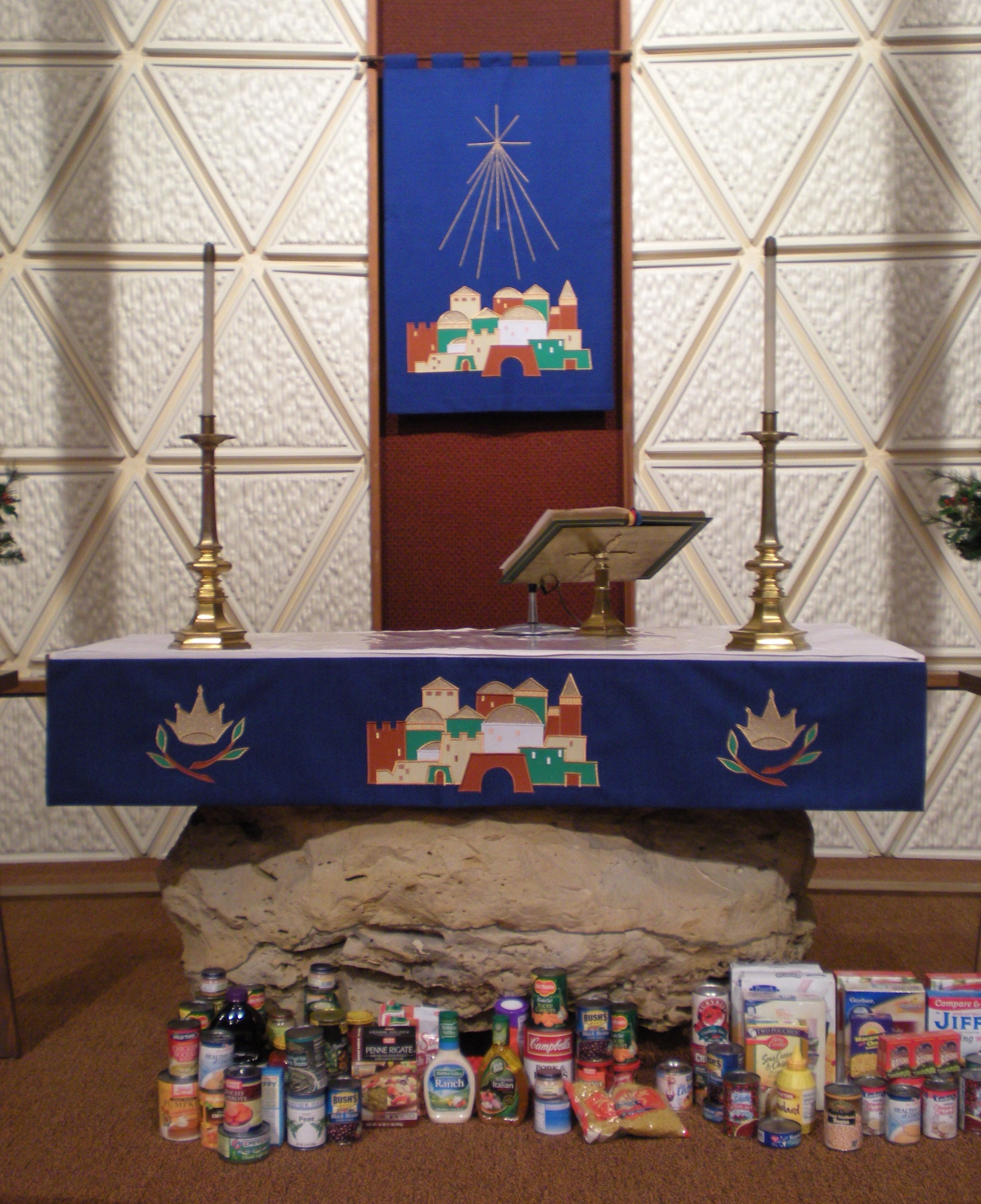A God who lives
Yesterday was the Spring Clean up day at our church. I spent most of the morning cleaning the sanctuary with Nora. Nora is one of our older members, her and her late husband were there when our church was formed.
I had no idea how involved until yesterday. Our altar, shown here decked out for Advent, is a unique feature of the church. You can see it is a boulder with a wooden top. Talking to Nora, I now know why. She mentioned that according to the Old Testament an altar should be of unhewn (unfinished) stone and of an entierly different wood than the rest of the wood used in the sanctuary. I found the unfinished stone referenced in Exodus 20, but I haven't been able to find the different wood instruction. Regardless, of the specific instructions, the more important part of the conversation was how Nora described her and her husband's experience. Experience where God was an active participant. She mentioned that it was a blessing to find a rock that was the right size and shape in the quarry that wouldn't require any tooling. On top of that, the altar top is made out of "some wormy chestnut" that Nora's family had been keeping. Nora said they didn't know why they were keeping it, "but the Lord knew." In our culture it is easy to see God as divorced from history - especially when it gets us out of answering thorny theodicy questions. That's not how Nora sees God, she understands God as a real power that guided her husband to that particular stone and kept the wormy chestnut safe for God's very specific purpose. At the beginning of Holy Week, I am challenged to see God as an active and pervasive force in this world.